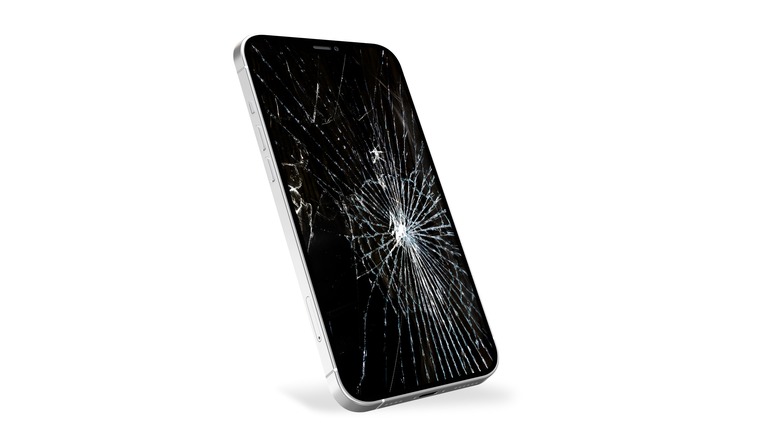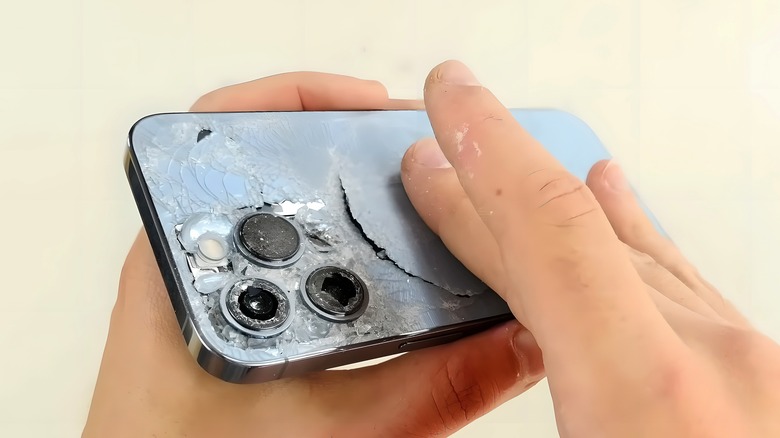Why You Should Never Use WD-40 To Fix A Cracked Phone Screen
Having any amount of internet presence means inevitably being subjected to videos or web ads that make questionable claims about easy ways to fix things, make money, etc. Sometimes they might look convincing, too, which makes them even more risky, ultimately leading users to potentially destroy expensive equipment purely for a laugh.
Sometimes it's a tip about microwaving your iPhone to improve battery power, other times it's the assertion that you can fix a cracked phone screen using WD-40 (which, to be clear is totally incorrect). In these situations it's always best to trust your gut if something doesn't feel right. Especially when it's a counterintuitive solution to a problem that typically requires spending time and money for professional repairs. If nothing else, do not attempt any of these "miracle fixes" — no matter what form they take — before doing thorough research first. Check to see if any sites or channels you trust can provide any concrete details, and look for debunking articles or videos from trusted sources. But do not, under any circumstances, try to fix your phone's screen with WD-40 because it can lead to significant damage.
Using WD-40 on a cracked screen could damage internal parts
Our phones are made up of a lot of different (and often delicate) materials, many of which can be weakened or outright destroyed when exposed to the popular lubricant dissolved in a solvent known as WD-40. There are actually many surfaces you really shouldn't use WD-40 on. For example, it's risky to use WD-40 on plastic because it can make several types of plastic very brittle. Unless you know for sure your phone is made up of nylon, polypropylene, polyethylene, or polyester plastics (which are better at resisting WD-40's effects) it's best not to take the chance.
It's not just plastic, though. The screen itself can be damaged (or become even more damaged in this case) by WD-40, along with a lot of internal components if any of the substance is able to seep into the casing. And remember, WD-40 is a lubricant, so it's designed to get into small cracks and openings. There's little to no chance spraying your broken phone screen with this stuff won't result in some of it getting inside the device. Once that happens, it will probably be time to get a new phone altogether.

